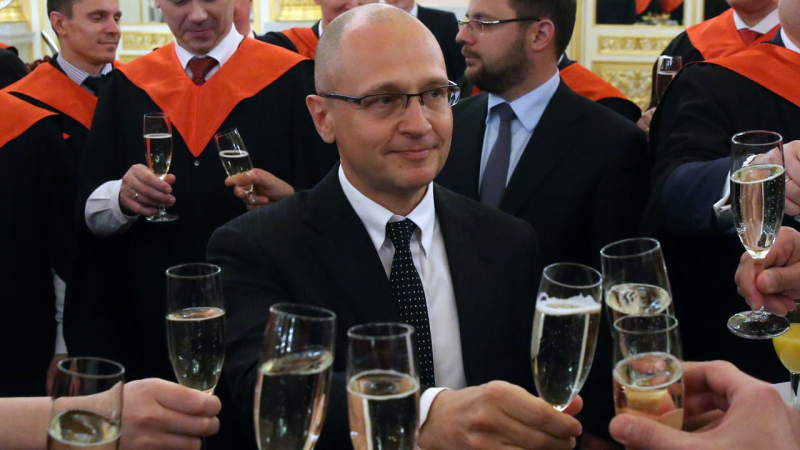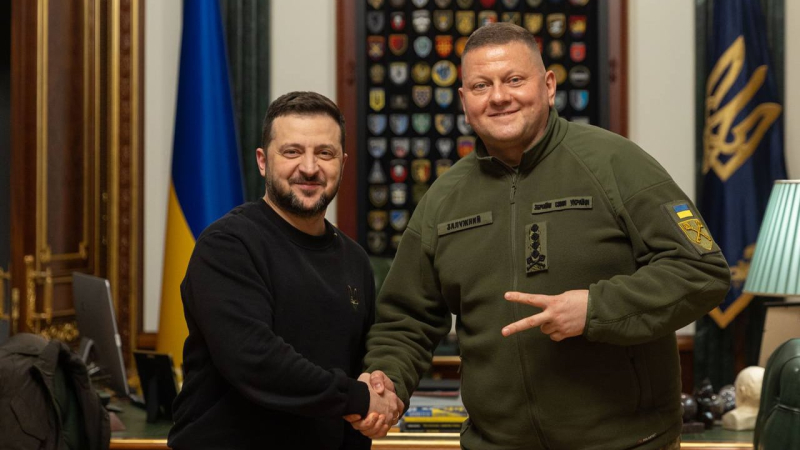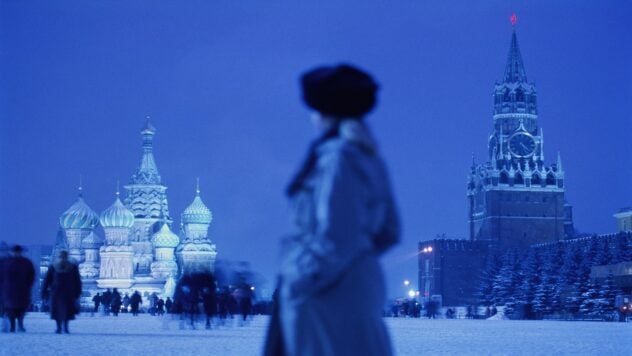Russia has stepped up disinformation campaigns against Ukraine's top leadership using social media and fake news.
The Washington Post writes about this with reference to internal Kremlin documentation regarding strategic plans to destabilize Ukraine.
RF Problem — sow division
As the publication writes, when the first news appeared last month that President Vladimir Zelensky was preparing to fire the commander-in-chief of the Armed Forces of Ukraine Valery Zaluzhny, officials in Moscow seemed to rejoice. According to the documents, they tried to organize just such a split for many months.
Now watching
— We need to intensify the conflict between Zaluzhny and Zelensky on the principle “he intends to fire him”, — WP quotes words written by one Kremlin political strategist, said a year ago after a meeting of high-ranking Russian officials.
The administration of Russian President Vladimir Putin has ordered a group of Russian political strategists to use social media and fake news to promote the theme that Zelensky is “hysterical and weak”. … He is afraid that he will be pushed aside, so he gets rid of dangerous ones”.
At the direction of the Kremlin, thousands of posts and hundreds of fabricated articles appeared on social networks created by “troll farms” and spread in Ukraine and Europe, which tried to exploit rumors of tension between the two Ukrainian leaders, according to an archive of Kremlin documents obtained by a European intelligence agency and reviewed by The Washington Post.
These files, totaling more than 100 documents, were provided to The Post to reveal for the first time the scale of Kremlin propaganda aimed at Zelensky to split and destabilize Ukrainian society — efforts that Moscow has dubbed “information-psychological operations”.
However, opinion polls show that Ukrainian society has remained remarkably united since Russia's invasion, and officials in Moscow have sometimes expressed frustration at failing to undermine Zelensky and stoke division, documents show. . One of them, in one of the conversations, complained that the Ukrainian president looked like Brad Pitt, a global star with an image that could not be spoiled.
But now, with General Zaluzhny retired, front lines frozen, and further U.S. military and financial support uncertain, some in Kiev are concerned that Russia's covert propaganda efforts could begin to undermine national cohesion and morale.
— The most difficult times are ahead. Russia has survived and is preparing a new campaign, which consists of three main directions: first, pressure on the front line; secondly, attacks on Ukrainian infrastructure; and thirdly, this campaign of destabilization, — said one senior European security official, who like others spoke on condition of anonymity to avoid discussing sensitive issues.
Documents show how in January 2023, the first deputy head of the Kremlin administration Sergei Kiriyenko instructed a group of officials and political strategists to establish a presence on Ukrainian social networks to spread disinformation.

Sergiy Kiriyenko/Photo: Getty Images
The work was based on an earlier project that Kiriyenko, a longtime Putin aide, carried out to undermine Western support for Ukraine, including in France and Germany, a previous report by The Post showed. The European propaganda group was supervised by one of Kiriyenko's deputies, Tatyana Matveeva, head of the Kremlin department for the development of information and communication technologies, the documents say.
By the end of 2022, after Ukraine had pushed back Russian troops in the Kharkov and Kherson regions and officials in Kiev were talking about a large-scale spring counteroffensive in the east and south, Kiriyenko assembled a second team aimed at destabilizing Ukraine itself , the documents say. This work was headed by one of his closest aides, Alexander Kharichev, a bureaucrat known in Moscow circles as “setter” or “election handler”, as he makes sure that internal elections go in favor of the Kremlin.
At a meeting on January 16, 2023, Kiriyenko formulated four key tasks for the propaganda team to destabilize Ukraine: discrediting the military and political leadership of Kiev, splitting the Ukrainian elite, demoralizing Ukrainian troops and disorienting the population of Ukraine, the documents say.
The success of the team had to be assessed by key indicators: They had to “lower the ratings of key employees of the Zelensky apparatus, the government of Ukraine and the command of the Armed Forces of Ukraine”, as well as strengthen the faith of the Ukrainian population in that the country's elite works only for themselves.
— An increase in government layoffs and public conflicts would also be a sign of achievement. To increase fear and anxiety, Ukraine's losses in the war should have been exaggerated, — writes WP, referring to Kremlin documentation.
The documents show progress was tracked in nearly weekly Kremlin meetings where strategists gave presentations showing the most-read posts they made on Ukrainian social media and tallied the overall spread of their results. They also conducted weekly public opinion polls on the level of trust in Zelensky and the country's military leadership.
Among the materials they highlighted was a fabricated Facebook post claiming that the family of a dead soldier had received no help from the government, which received more than 2 million views, according to one presentations. According to another, one of the main posts aimed at disorienting the population was a fake video on Telegram, which claimed that the main military goal of the authorities in Kyiv — “fight until the last Ukrainian”.
The Russian Federation is building its propaganda network in Ukraine from scratch
By early March, dozens of hired trolls were churning out more than 1,300 texts and 37,000 comments weekly on Ukrainian social media, according to one presentation obtained by WP. Records show that employees of “troll farms” earned 60 thousand rubles per month, or $660, for writing 100 comments per day.
Most of the strategists' reports to their political masters focused on the volume of content created and total views, but during the first five months they provided little evidence that these efforts were having any impact on Ukrainians. Kremlin polls showed that trust in Zelensky remained consistently high: from February to June, between %68 and %73.3 Ukrainians trusted the president.
However, by August, according to Kremlin polls, this figure had fallen to %65.4. It is impossible to assess the accuracy of these polls, and it is unclear how Russians conduct them in Ukraine, WP notes.
A poll by the Kyiv Razumkov Center conducted in July showed that trust in Zelensky was 81 percent. The latest poll published by the center on February 8 showed that trust in Zelensky had fallen to 69 percent.
The strategists realized the complexity of their task.
— At the moment, we have to enter the media landscape of Ukraine practically from scratch. The pro-Russian segment was completely purged from the media and social networks, — stated in one of the April reports.
Strategists advised developing “a network of Telegram channels in combination with Twitter and Facebook/Instagram” as the most effective way to penetrate the Ukrainian media space, noting that Telegram's audience in Ukraine grew by 600% over the previous year. After the invasion, Zelensky's government created a single source of television news, but Ukrainians pulled away from the programs, saying that Ukraine's military problems were not sufficiently covered and discussed, WP said.
— Telegram has become the most important source of news, even more important than the mainstream media. It cannot be blocked, — said a senior European security official.
Moscow strategists stressed the need to avoid overt pro-Russian propaganda to build trust with audiences.
— Obviously we can't fly with our old resources, — wrote one of the strategists on April 5 after a meeting in the Kremlin.
By the first week of May, a post posted by Kremlin strategists on Facebook, which said that “Valery Zaluzhny could become the next president of Ukraine”, received 4.3 million views, according to one from presentations. Then the Kremlin gave the order to create similar posts or “augmented reality” — term used by Russian officials to refer to fake news — including reports that Western leaders are looking for a replacement for Zelensky and that Zaluzhny intends to stop the counteroffensive.
Meta, Facebook's parent company, said regarding Russian posts about Zaluzhny and the alleged lack of government assistance for the fallen soldier that it “monitors and blocks accounts, pages and websites created by the campaign” from 2022, “including these two pages, which were quickly discovered and disabled by our security team”.
Undeterred, Kremlin strategists planted numerous articles on Ukraine via social networks, one of which in May was entitled “Zelensky clings to the throne. Democracy is being liquidated in Ukraine”, — it says in the documents. Another article, published in June, aimed to highlight how Zaluzhny had disappeared from the public eye for a long time, and bloggers were instructed to post comments that said: “Here's why Zaluzhny disappeared: Because he could and was supposed to take the place of Zelensky”.

Photo: Office of the President
Disinformation Reprocessing: Operation Doppelgänger
Strategists also sought to exploit Kiriyenko's campaign in Western Europe, repurposing her disinformation for use in Ukraine. The European campaign's tactics included cloning and usurping media and government websites such as Le Monde and the French Foreign Ministry, then posting fake content defaming the Ukrainian government on them, in an operation dubbed Doppelgänger by European Union officials. They also created fake X, or Twitter, accounts for prominent figures including German Foreign Minister Annalena Bärbock. Strategists tried to place stories or posts from these sites or accounts on Ukrainian social networks as real European reports or comments.
After the fake Burbock account claimed in September that “the war in Ukraine will end in 3 months”, German authorities launched an investigation and discovered more than 50 thousand fake user accounts coordinating pro-Russian propaganda, including those that promoted this tweet. Authorities believe the fake accounts were a continuation of the Doppelgänger campaign, Der Spiegel reports.
Operation Doppelgänger was first exposed by Meta in September 2022 and then by French authorities last summer and is linked to the fake news site Reliable Recent News. which goes back to two Russian companies — Agency for Social Design and Structural National Technologies.
Kremlin documents show that the leaders of these companies — Ilya Gambashidze and Nikolai Tupikin — worked directly with Kiriyenko and another Kremlin official, Sofia Zakharova, who coordinated efforts in Europe and Ukraine. “She — brain”, — said one European security official.
In July, the European Union imposed sanctions against Gambashidze, the National Technology Structure and the Social Design Agency for their role in creating fake web pages and social media accounts “usurping the identity of national media and government websites& #8221; as part of “Russia’s hybrid campaign against the EU and member countries”.
Gambashidze, Tupikin and their colleagues proposed narratives that they hoped would destroy the image of Zelensky in the West as a hero of a small country fighting global evil, according to one of the documents sent in April. They proposed to present Zelensky as an actor, capable only of following the script written for him by the United States and NATO, and his Western supporters — as tired of him. They offered to distribute forged Ukrainian government documents as evidence of corrupt military procurement schemes, and also suggested that Zelensky and his family had accounts in Western banks, the document says.
These plans led to hundreds of articles and thousands of social media posts, translated into French, German and English, that were directed against Zelensky, the document says.
One of the articles, intended for a French audience, was entitled: “The conductor is tired of Zelensky's concerts: US actions in Ukraine suggest that Washington soon intends to get rid of Zelensky, without discussing this with Paris”.
Based on this article, one of the strategists assigned an employee of the “troll farm” prepare posts on social networks in French with the following content: “Washington will replace Zelensky with a more capable president. And France will have to silently continue to arm and finance Ukraine”.
Another article described how Zelensky pushed Ukrainian troops to defend Bakhmut against Zaluzhny's wishes, which led to the death of 250 thousand Ukrainian soldiers — a wildly exaggerated death toll in the brutal battle for the city. To the employees of the “troll farm” it was proposed to write comments such as “Why Ukrainian generals hate Zelensky? PR on the blood of fighters” and “Shoot the exhausted president? A general’s conspiracy is brewing in Ukraine”.
According to European security officials, one of the strategists' goals was for topics posted on European social networks to reach Ukraine through reposting and amplification, or to be picked up by Ukrainian politicians seeking to raise their profile with provocative posts.
— They are looking for weak points. … They use what they create themselves and everything that lies under their feet. Everything is aimed at demoralizing people, — said a second European security official.
The strategists also had price lists for placing pro-Russian comments in prominent Western media and for paying “influential persons” on social networks in the USA and Europe, “ready to work with Russian clients”. The documents say that the Russians were willing to pay up to $39 thousand for the placement of pro-Russian comments in major media outlets in the West.
— Almost everywhere these will be columnists, opinion leaders, former diplomats, officials, professors and so on, — says the note to the price list. It is unclear from the documents whether the Kremlin managed to sneak the material into Western publications and whether anyone was paid for it.
At the same time, Kremlin political strategists did not miss the opportunity to line their own pockets, WP notes, citing the words of one of them that he “added 20 percent”.
With the onset of winter, several fake videos appeared in Kyiv in which Zaluzhny calls Zelensky an enemy of the people and calls for a coup. These videos were quickly condemned as fake and had no real impact on Ukraine. But a senior European security official expressed concern that the Kremlin was only testing the waters for future hoaxes.
— It's very expensive, but it can work. When the time is right it can be used — he said.
Previously, ICTV Facts reported how Russia annually, with the help of media, television and social networks, creates and distributes hundreds of fakes about Ukraine and the Ukrainian Armed Forces. Read more about the Kremlin's methods of manipulation — read the material.

